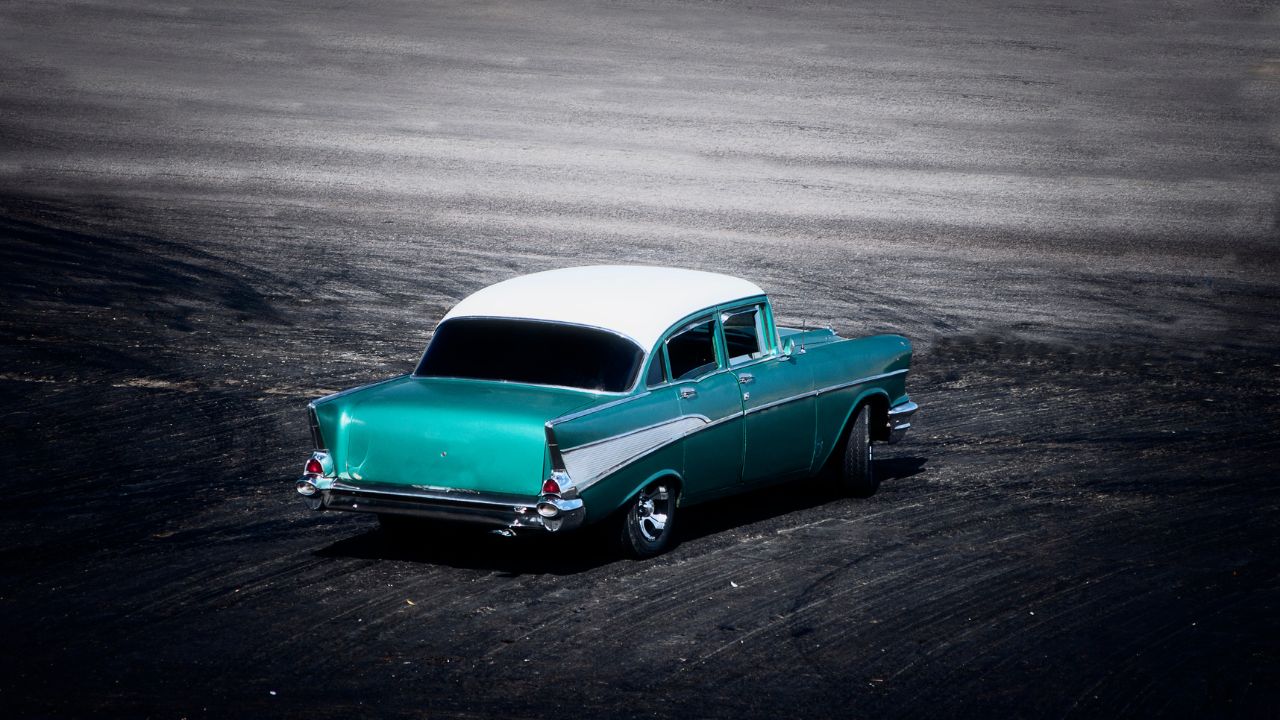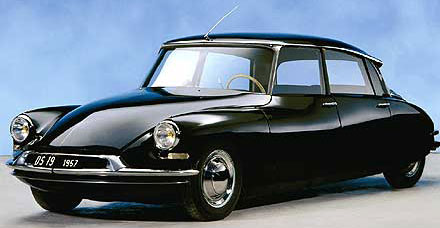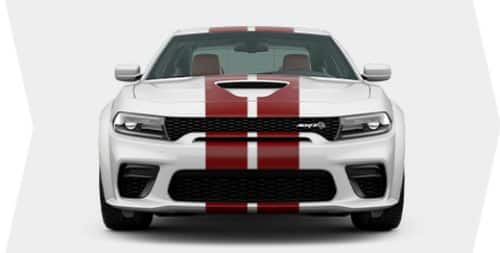
The beginning of the muscle car craze was fueled by the huge displacement engines from the Detroit OEM's (formerly known as The Big Three - GM, Ford, and Chrysler). The Japanese and German invasion of muscle cars began in the 1960s. These car manufacturers included Daimler, Volkswagen, and Toyota, while Japanese carmakers included Nissan, Mazda, and Mitsubishi. This invasion gave birth to the first truly American muscle cars.
1970 Chevrolet Chevelle SS 454 LS6
The LS6 engine in the 1970 Chevrolet Chevelle is one of the greatest examples of the modern muscle car. GM rated LS6 at 450 horsepower, but real-world numbers place it closer to 500. The LS6 engine's massive torque curve is what made it so popular, regardless of its horsepower rating. The torque produced by big-inch motors can shred tires. The Chevelle LS6 was a monster on the track.
The LS6 engine was key to winning the horsepower wars in the late 1960s and early 70s. The Chevrolet Chevelle SS454 LS6 engine proved to be the secret weapon in 1970's muscle car battle. Although the Ford 428 Cobra jet's engine was big, as was the Chrysler 440 wedge and Dodge 426 Hemi, the LS6 option was only offered for a single model, 1970. Buick also had a 455-cubic inch (7.46-L), engine in the 1970s.

1970 Plymouth Duster
The performance-oriented, compact 1970 Plymouth Duster was a muscle car that put bigger cars to shame. The compact car was powered by a 340 cubic inch V8 and featured a sporty hood. This allowed it to push the limits of performance. Its front end sheetmet and hood scoop were very similar to the Valiant. However, it was distinguished with its cowlback design. Duster models were priced at $2,172 in 1970. The car was also available as a sedan or two-door coupe.
The Plymouth Valiant's flagship product was the duster. It was introduced for 1970's model year and was sold for seven more years. The most powerful variant was the 340-cubic-inch V-8 with 275 horsepower. Budget-friendly engines included two slant sixes and a 318-cubic-inch V-8. In 1970, the Plymouth sporty car was the most loved brand. Despite its affordability, many buyers loved this duster's performance.
1970 Coronet Super Bee
A 1970 Coronet Super Bee is one of the most iconic cars of all time, with its killer looks and unstoppable power. In addition to the killer looks, this Dodge muscle car has an outstanding restoration that is spotless and detailed. Future Classics can help you realize your dream of owning one these iconic cars. Our team of experts can help you get started on the restoration process.
This iconic muscle car was a member of the Scat Pack, which meant that it was a Dodge performance streetcar that competed with Plymouth. The car's nose was completely redesigned and the base price was dropped to $3074. For maximum impact, the car's paint colors were selected, including Panther Pink. This color was only used on a few cars, making it rare. Despite this unique style of painting, 1970 saw a decline in sales.

1970 Pontiac Trans Am SD-455
The storied 1970 Pontiac Trans Am is the sexiest of the classic muscle cars. The supercharged four-cylinder engine, with its 290 horsepower (270 PS) rating, was the first car to feature such a high compression ratio. Pontiac engineers spent the summer developing the engine, which became the basis of their SD-455 muscle car. Despite its high compression ratio, it produced only 290 SAE horsepower.
A 16-year-old car enthusiast sought out a 36Kiilled survivor in spring 1977. The Trans Am was the first American car to have a hood sticker. It was also driven by many A-list celebrities. Burt Reynolds, the famous movie star, owned a Trans Am. It's not hard to see why this car is called the "Screaming chicken".
FAQ
What jobs are available for car mechanics?
Car mechanics can find work in three areas:
-
Automotive repair shops
-
Dealerships
-
Independent garages
Automotive repair shops
This is where most people first think of becoming a mechanic. It's actually the easiest way to start. Either you can work in a shop that is owned by another person or start your own business.
You will need to join a union if you want to work in a shop. Once you have been accepted into the Union, you'll be given training by the union.
After completing the training, you'll be ready to start work.
Register with the government if you want to open your garage. After you have registered, you will need to meet certain standards.
After you have registered, you will be issued a license to operate your garage.
Your license allows for minor repairs and spare parts sales. It won't permit you to fix serious engine problems.
You will be expected to sell spare parts and also offer guidance and advice to customers.
Dealership jobs
Most dealerships employ mechanics who specialize in one area of the car. For example, they might only deal with brakes or only replace tires.
However, some dealerships also hire general mechanics who can handle all aspects of car repairs.
These positions often require applicants that they undergo special training before being allowed work. Employers are able to choose which candidates will best suit their position.
Some dealerships hire students straight out of college. These graduates already know the basics of mechanical engineering and therefore have no problem learning about cars.
Independent garages
Independent garages don't belong to any particular dealership. They are more focused on providing top-quality service.
Because independent garages aren't affiliated with any company, they can afford to pay higher wages. As a result, these jobs are generally better paid than those at dealerships.
However, independent garages may not be better places to work. Many business owners prefer to own their businesses and not delegate the responsibility to others.
So you may find yourself working long hours without having any say over what happens during the day.
Expect to earn lower salaries than if you were working in a dealership.
The good news is that you can easily switch between different kinds of jobs. If you want to work at a dealership, then you simply need to ask your current employer if he would consider hiring you as a mechanic instead.
You could also apply directly to an owner of a garage if that's what you want.
Unfortunately, finding a new job can be difficult. You can earn more depending on many other factors.
Consider, for example, what type of vehicle you are repairing and whether additional labor charges will apply.
How long does it take you to become a great mechanic?
To become a skilled mechanic, you need years of experience and practice. The best way to learn how to repair cars is by working under the supervision of a professional mechanic.
You will have to spend time in a garage learning about cars and mechanics. You will need to read books on mechanical engineering and car design.
You will also need to go to auto school.
It's important to start early. It doesn't matter if you're old or not to study automotive technology. Do you want to be a mechanic? Get started today!
Is it difficult to become a mechanic apprentice
It's not simple, but you can learn quickly and there are many avenues for advancement.
You must have patience and perseverance. You will also need to be able fix cars, trucks and motorcycles.
Customers and relatives can exert a lot on you. But, you shouldn’t be pressured to make any decisions you aren’t happy with.
If you enjoy fixing cars, it could be a great career choice. It's a job where you can earn a decent salary and build up your business.
But, you might prefer a different path. In this case, you could consider becoming a technician instead.
This requires you to use your technical expertise in support of other workers. Technicians could benefit from your technical expertise to solve problems or teach new techniques.
Another option is to become an advisor in service. When customers bring their cars into a garage, they will receive advice and assistance.
It all depends on your goals. There are many options to choose from, and it is up to you which one suits you the best.
Statistics
- According to the BLS, the median annual salary for automotive service technicians and mechanics in the United States was $44,050 in May 2020. (uti.edu)
- Apprentice mechanics earn significantly less hourly than mechanics who have completed training, with a median wage of approximately $14.50 an hour, according to PayScale. (jobhero.com)
- 52% of Mechanics in the United States think their salaries are enough for the cost of living in their area. (indeed.com)
External Links
How To
How to correctly diagnose your vehicle for repairs
The symptoms of your vehicle are the first thing you need to look at in order to determine whether it is in dire need of repairs. Then, follow these steps to diagnose your vehicle properly.
-
Check engine lights. Check the dashboard light indicators such as the engine light indicator, the oil pressure gauge, the battery light indicator, the coolant temperature gauge, and the RPM gauge. If any of them have been flashing for several days, it may mean something is wrong with your vehicle.
-
Check the treads of your tires. Tires with worn treads could cause problems when handling or braking. You should also inspect the wheel treads. They should be smooth and clean. You can do this by taking off the wheels. Use a flashlight to see how well the treads are worn.
-
Pay attention to the level of your brake fluid. It is important to keep track of how much brake fluid you have in your car. This will ensure that your brakes run smoothly. Low brake fluid levels could cause your brakes to fail when you apply pressure.
-
Test the suspension system. Vehicles usually have a suspension system that helps absorb shocks and vibrations while driving. It gives you better control and allows for smoother accelerations and decelerations. It might feel uncontrollable or wobbly if your vehicle is suffering from a suspension problem. To determine whether your vehicle may have a suspension issue, you can try to put weight on the rear or front axle and watch the movement.
-
Examine the steering wheel. The steering columns are what connect the steering knob to the rest. The steering column can often be damaged by an accident. Replace it if your steering column feels loose or unsteady.
-
Observe the exhaust pipe. The exhaust pipes transport gases from the combustion chamber to outside. You can let harmful fumes into your home if your exhaust pipes crack or leak. If your tailpipe bends, it is important to fix it immediately.
-
Look under your hood. To check for unusualities, look under the hood. Leakage of fluids in your engine could indicate that it is leaking. A professional technician should be contacted if your engine compartment emits an unusual smell.
-
You should inspect your air filter. The air filter in your vehicle collects dirt and dust from the environment. Dirty air filters can cause your vehicle to run poorly. Replace your air filter regularly.
-
Verify the fan belt. Your vehicle's fanbel is what connects the engine and the transmission. The engine will not turn if the fan belt breaks. It is very easy to replace your belt. All you need to replace the belt is a screwdriver with pliers.
-
Make sure you inspect the radiator hoses and hoses. The radiator hose carries water from the radiator to the engine. It can cause hot liquid to leak onto the engine if it is damaged or cracked. Repairing the hose is easy with a pair of needlenose pliers or a small wire brush.
-
Be sure to inspect your windshield wipers. Windshield wipers work by using electricity to remove rain and snow. If they stop working, they could leave streaks on your window glass. To fix the problem, simply change the washer fluid.
-
Check the battery cables. Batteries provide power to electrical systems inside your car. Before you change batteries, disconnect the positive cable. Failure to do so can damage your alternator.
-
Check the headlights. Headlights are used to illuminate the road ahead. If they don't work properly, it can cause poor visibility. To check if the bulbs have gone out, you can inspect them.
-
Pay attention to the lights. The lights are there to warn other drivers if they approach you at night. It could cause distraction and even lead to an accident if it doesn't work.
-
Check the brakes. Before you collide with another vehicle, brakes will slow down the car. If your brakes aren't working properly, you may lose control and crash into other cars.
-
Change the oil. The oilkeeps your engine lubricated. It helps keep metal parts from getting too worn down. Changing the oil every month is recommended.